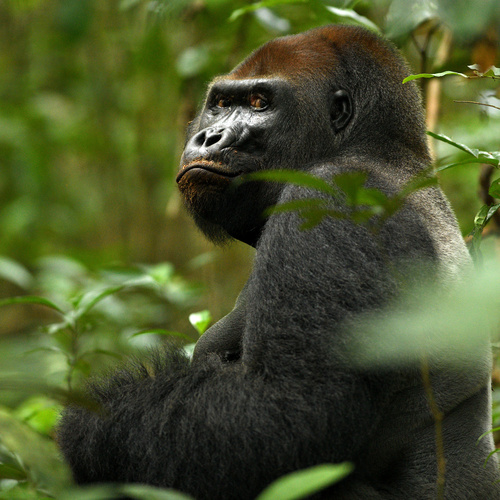
Western Gorilla
The Western Gorilla, Gorilla gorilla, thrives in Central Africa's lush rainforests. Known for their social bonds, they communicate through gestures and vocalizations. With a gentle diet of foliage and fruit, these majestic creatures play a crucial role in forest ecology, aiding in seed dispersal and plant diversity.
35-50 years
Lifespan
100.0 - 200.0 kg
Weight
Height: 1.4 - 1.7 m
Size
Grey, Black
Color
25 mph
Top Speed
Critically Endangered
Conservation Status
Decreasing
Population Trend
Characteristics
Gorilla gorilla, commonly known as the Western Gorilla, is characterized by its robust build, large head, and prominent brow ridges. These primates inhabit the dense rainforests of Central Africa, displaying complex social structures and communication. They are primarily herbivorous, feeding on leaves, stems, and fruit.
Distribution Range of the Western Gorilla
The Gorilla gorilla, commonly known as the Western Gorilla, is native to the dense tropical and subtropical rainforests of central and western Africa. It is primarily found in countries such as Cameroon, Central African Republic, Democratic Republic of the Congo, Equatorial Guinea, Gabon, and Republic of the Congo.
Western Gorilla's Habitat
Environmental Conditions
Western Gorillas inhabit lowland tropical forests, swamp forests, and montane forests. These environments are characterized by warm and humid conditions, with abundant rainfall throughout the year. The forests provide a dense canopy and a rich undergrowth, creating a complex and layered habitat that supports diverse plant and animal life.
Ecological Niche
As primarily herbivorous primates, Western Gorillas play a crucial role in their ecosystem by dispersing seeds through their feces, which helps maintain forest diversity. They typically feed on a diet of leaves, fruits, stems, and bark. Gorillas are social animals that live in groups led by a dominant silverback male. Their ecological niche involves maintaining the health and balance of their forest habitats through their feeding and social behaviors.
Copyright @ Nature Style Limited. All Rights Reserved.
 English
English